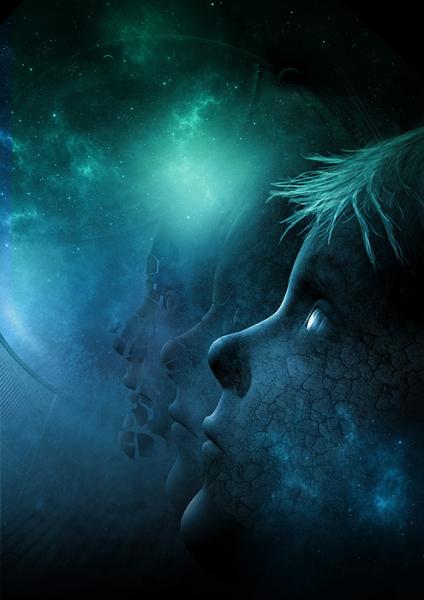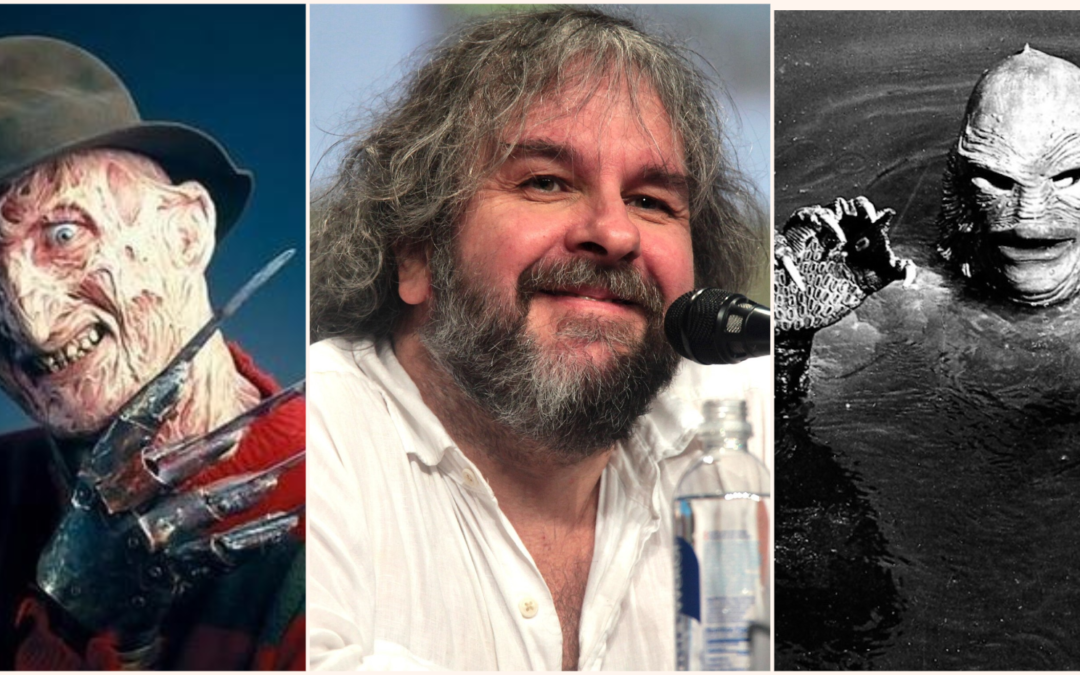By Mike Lera
Like watching a scary movie, it can be equally unsettling when we ponder over how and why so many highly anticipated horror films had never made it to the big or small screen. Mounds of unfinished scripts or red-lit projects remain locked within studio basement bowels for all eternity.
We took a handful of such films that were or are in development purgatory and paid them a little visit (some you may never knew about), exploring the various stories behind these horror films receiving the ultimate deaths!

The Creature From The Black Lagoon (Remake)
Regardless of generation or age, it’s safe to say that almost all horror fans pay homage to classic Universal monster films and their characters. Frankenstein, Dracula, The Wolfman, to name a few, each respectfully getting their own movie remake (or a few) in years past. However, if there is one iconic monster within these ranks who for decades has been targeted for a “re-creation” amongst Hollywood’s finest, it is 1954’s The Creature From The Black Lagoon.
Like the film’s “Gill Man”, the concept and script of a Lagoon remake has undergone an extensive evolution for almost half a century. The first to try his hand at the daunting task was monster movie legend John Landis, the man who brought us the horrifying, but humorous An American Werewolf In London and the entertaining, yet eerie Michael Jackson’s Thriller. Proving he could pay an excellent tribute to classic monsters, a la wolfman, Landis in 1982 sought out Jack Arnold, who helmed the original Lagoon and its sequel, 1955’s Revenge of the Creature (featuring a young Clint Eastwood), to direct a remake while Landis would serve as producer. The idea was for a 3D movie, just like the original, and would be released by Universal in 1983, the year of a massive 3D horror craze. Yet Universal already had their financial hands full that year with another scary aquatic beast, Jaws 3D, and thus, the Lagoon project was shelved. A decade later, Halloween writer/director John Carpenter took a stab at The Creature, having successfully remade Howard Hawks’ 1951’s The Thing (From Another World) with his own style and flair, and was set to team up with Oscar-winning creature creator/makeup artist Rick Baker. Yet for reasons unknown, Carpenter’s Lagoon remake never reached the water’s surface. Guillermo del Torro, also amongst the fleet of former proposed Lagoon directors rejected by Universal, decided to fish in a different pond by creating his own version of The Creature with The Shape of Water (2017), a “What if the Gill Man got the girl” tale and earning the Mexican filmmaker Best Picture and Best Director.
Another famed filmmaker who once threw out his Lagoon net to Universal was Guardians of the Galaxy and Suicide Squad director James Gunn in 2004, only to have his boat sunk. More recently, Walking Dead director/producer Greg Nicotero, pairing up with From Dusk Till Dawn director Robert Rodriguez, have also tossed their lines. Because of the success of The Invisible Man, perhaps these two talented dudes’ Lagoon just may convince the studio to revamp its plan for a Dark Universe.
R.I.P. Ricou Browning (Feb. 16, 1930 – Feb. 27, 2023), who played the Gill Man in the original The Creature From The Black Lagoon and its two sequels and was the last surviving member of Universal’s classic monsters.

Peter Jackson’s A Nightmare on Elm Street 6 – The Dream Lover
While the Nightmare on Elm Street franchise helped ignite the careers of several acclaimed film directors, including Renny Harlin, Charles Russell and of course its creator, Wes Craven, one illustrious filmmaker whose script surprisingly never made it out of Freddy’s realm and into reality was The Lord of the Rings/King Kong director Peter Jackson, his screenplay titled, A Nightmare on Elm Street 6: The Dream Lover.
A somewhat unknown director during the late 80’s (save for his films Bad Taste and Meet The Feebles), New Zealand filmmaker Jackson had written an Elm Street script for New Line Cinema at just the right time, the Freddy franchise having suffered a severe slashing with the failure of 1989’s The Dream Child (Nightmare 5) and were badly in need of something fresh and original. Jackson’s story was of Freddy Krueger losing all his power over his “beloved children”, becoming an absolute joke whom kids actually wanted to fall asleep to and kick around. It’s not until one teen messes up and is killed by the burned faced psycho-demon that he finally regains his strength and begins anew, becoming an abomination far scarier than what we had gotten in the previous sequels. Actually sounds… pretty good.
Jackson’s script was based on what the Freddy series had actually become – a joke – and would return to the deeply intense, less wise-cracking Krueger we got in the first movie (which Wes Craven later brought us in New Nightmare). Sadly, New Line went with another script, leading to Freddy’s Dead: The Final Nightmare, which, like Nightmare 5, ended up as just that – a nightmare. While it’s unclear as to why New Line rejected Jackson’s genius idea, some suggest it was because the studio was set on killing off Freddy, whereas Jackson’s script would have meant Freddy continuing his reign of dream terror. Of course, in later years, New Line eventually did Jackson justice in their production of the Lord of the Rings series.
Interestingly, New Line later went with a storyline similar to Jackson’s in 2003’s Freddy vs. Jason. Go figure.

Stephen King’s The Jaunt
If we were to guess, there is probably an entire office floor of undeveloped film scripts for Stephen King novels and short stories, and while there are many that should remain dormant (such as the sci-fi-esque proposed C.U.J.O.), one of King’s frightening fables that fans have longed to see on screen for years is the shocking short story, The Jaunt.
Considered one of King’s most disturbing and psychologically draining tales ever, The Jaunt was first published in The Twilight Zone magazine in 1981, eventually becoming part of King’s praised short story collection Skeleton Crew four years later. A sci-fi/horror story set in the 24th century, The Jaunt centers on the scientific and realistic concept of human teleportation and the great conveniences – and consequences – it can bring. Mark Oates and his family sit at a New York port terminal, anxiously awaiting their trip from Earth to Mars via The Jaunt, a fantastic development in both local and space travel that can transfer people from one planet to another in a blink. There’s just one thing every teleporter must receive before jaunting: sleeping gas. When jaunting, one’s physical body will take approximately 0.000000000067 seconds to get from one place to another. To the conscious mind, however, it is believed that a person’s experience will last billions of years to eternity, remaining helplessly and utterly alone in an endless “field of white”. Therefore, the jaunter is administered an anesthetic and rendered unconscious before their travel, sparing the teleporter from impending madness.
Unfortunately for Mark Oates, whose daring, curious son Ricky discretely evades the sleeping gas by holding his breath, a rather horrifying surprise awaits him and his family at their destination when young Ricky‘s conscious mind finally gets to Mars! Truly, one of the most thought provoking of all horror story endings.
While there have been a few indie shorts of The Jaunt, a mainstream film has been in talks for decades. In 2015, director Andy Muschietti began hemming together a feature adaptation of The Jaunt, yet went on to direct another King novel, It, instead. In 2021, it was announced that Fear The Walking Dead co-creator Dave Erickson would produce and develop a mini-series of The Jaunt.
Like our last entries, the reasons for The Jaunt remaining in its eternal “field of white” are a mystery. But if we were to speculate and assume a past director had once wanted to follow King’s unique story to the T, perhaps studios felt (and maybe still feel) The Jaunt’s freaky, outlandish concept and plotline (spoiler-free zone here) might have been a bit much for the unprepared, “sane” viewer.

The Evil Within
Most movies that have been in development hell for fifteen years or more – indie films, especially – can pretty much be declared as scrap metal.
However, miracles do happen.
The Evil Within (formerly titled The Storyteller), an independent horror film directed by Andrew Getty, was shot in 2002, and after a decade and a half of toil and turmoil, had finally writhed its way out of post-production limbo and into a screen premiere in 2017. A What’s Eating Gilbert Grape meets The Shining sort of fare, Within tells the story of a boy with an intellectual disability who chronically suffers from constant vivid nightmares, and after given an antique mirror by his older brother/guardian, the boy is told by his “reflection” to go on a killing spree.
Aside from elaborate special effects, demented Kubrick-like scenes and outlandish nightmare sequences, what is most fascinating (and grim) about this film is the story behind the story – an ambitious filmmaker’s journey toward getting his vision finished and recognized. And his fate.
The grandson of oil tycoon and art exhibitor, J. Paul Getty, Andrew Getty spent an estimated four to six million of his own money on his passion project and first feature film, Within shot mostly in his Hollywood hills mansion where he built an entire floor for his production suite. A perfectionist who became obsessed with his movie, Getty stubbornly bought all of his own camera equipment (which, typically, is rented), created his own animatronics and special effects and labored for over six years of filming – then another seven in post-production. Like writer/producer/director Tommy Wiseau, who also spent millions on his “drama”, The Room, Getty had written an uneven, ambiguous and somewhat trite script that, at times, was poorly acted out, and as a rookie filmmaker, he learned camera operating as he went along. The cast and crew changed frequently during filming, and only the film’s star Frederick Koehler and character actor Michael Barryman (The Hills Have Eyes, The Devil’s Rejects) stayed until the end. Though belonging to one of America’s wealthiest families, Getty’s movie injured him financially, the director even succumbing to eating only cereal for dinner to save money.
Getty unfortunately died in 2015 at age 47 due to heart complications from excessive methamphetamine use, before Within’s completion. However, his producer/editor Michael Luceri honorably took the helm and finished the project in 2017, distributed by Vision Films for a limited theatrical release, then eventually on Video On Demand.
In viewing Within, and in spite of its harsh criticisms, I honestly felt Getty’s work wasn’t super terrible for a non-experienced filmmaker. True, there were moments the movie had amateur written all over it. But to be fair, had this movie came out around the same time as, say, David Lynch‘s 1977 Eraserhead (his first film which took six years to make) or The Phantasm (1979) – incredibly bizarre, vague, and yet somehow popular indie horror films which, like Within, used the nightmare motif to blur the lines of reality (and possibly to help hide the novice directors’ “unorthodox” sense of story arc) – perhaps Within would have received more grace from audiences.
Nevertheless, The Evil Within was completed, which, given its long uphill venture, is to be commended. Perhaps it will one day achieve cult status in the midnight movie circuit such as Plan 9 From Outer Space or The Room.

